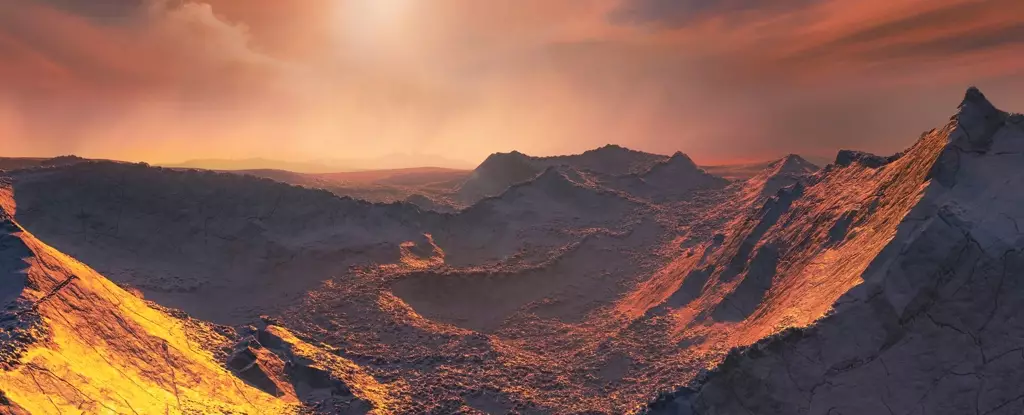 Unlocking Mysteries of the Cosmos: TOI-715b – The Newly Discovered Super-Earth in the Habitable Zone
Unlocking Mysteries of the Cosmos: TOI-715b – The Newly Discovered Super-Earth in the Habitable Zone
Astronomers have recently made a groundbreaking discovery in the vast cosmos – a new Super-Earth named TOI-715b. This exoplanet, found orbiting an M-dwarf star approximately 137 light-years away, has captured the attention of scientists worldwide due to its potential habitability. Let’s delve into the details of this fascinating finding and explore the implications it holds for our understanding of planetary formation and the search for life beyond Earth.
TOI-715b: A Super-Earth in the Habitable Zone
TOI-715b is approximately 1.55 times the radius of Earth, categorizing it as a Super-Earth. What adds to its allure is its location within the habitable zone of its host star, an M-dwarf. The habitable zone represents the region around a star where a rocky planet can receive an optimal amount of solar insolation to potentially support the presence of liquid water. TOI-715b’s presence in this conservative habitable zone of an M-dwarf star is captivating, sparking questions about the potential for life beyond our solar system.
Exploring the Sub-Neptune Radius Gap with TOI-715b
TOI-715b’s unique placement within the small planet radius gap adds further intrigue to its discovery. Astronomers have noted a significant absence of planets with radii between 1.5 and 2 times that of Earth, known as the sub-Neptune radius gap or the Fulton gap. This raises questions about planetary formation and mass loss mechanisms. TOI-715b, falling within this radius range, could provide valuable insights into the processes shaping planetary composition and evolution.
James Webb Space Telescope’s Role in Unveiling TOI-715b’s Secrets
The imminent launch of the James Webb Space Telescope (JWST) heralds a new era of detailed exoplanetary atmospheric characterization. TOI-715b stands out as a prime candidate for transmission spectroscopy due to its proximity to the red dwarf star, resulting in frequent and deeper transits. This offers a unique opportunity for efficient use of the JWST’s resources. Scientists aim to examine TOI-715b’s atmosphere, hoping to unveil clues about its habitability and potential for sustaining life.
Factors Favoring TOI-715b’s Habitability
While the ultimate question of habitability remains unanswered, TOI-715b holds promise due to several favorable factors. The star, TOI-715, exhibits lower magnetic activity compared to younger M-dwarfs, reducing the chances of sterilizing flares. Stable TESS light curves further indicate a conducive environment for habitability. The presence of another candidate planet within the system, TIC 271971130.02, adds to the intrigue surrounding TOI-715 as a potentially hospitable star system.
The TOI-715 System: A Rich Field for Study
The TOI-715 system presents a rich field of study for astronomers seeking to expand our knowledge of exoplanetary systems. Analyzing TOI-715b’s characteristics and comparing them to other known exoplanets aims to deepen our understanding of planetary formation and post-formation evolution. The potential confirmation of TIC 271971130.02, the smallest habitable zone planet discovered by TESS to date, adds to the significance of the TOI-715 system.
The Anticipation Surrounding James Webb Space Telescope’s Observations
As the James Webb Space Telescope embarks on its mission and conducts detailed observations of TOI-715b’s atmosphere, the anticipation among scientists and astronomy enthusiasts alike continues to grow. This remarkable discovery not only raises intriguing questions about the mechanisms of planetary formation and mass loss but also offers a tantalizing glimpse into the potential for life beyond our home planet.
Conclusion: TOI-715b – A Super-Earth with Potential for Life
The recent discovery of TOI-715b, a Super-Earth in the habitable zone of an M-dwarf star, marks an exciting milestone in the search for exoplanets capable of sustaining life. With its unique placement in the small planet radius gap, this exoplanet provides valuable insights into the processes shaping planetary composition. As we eagerly await the arrival of the James Webb Space Telescope, we anticipate a new era of detailed exoplanetary atmospheric characterization that may shed light on the habitability of TOI-715b and unlock further mysteries of the cosmos.
For the latest news from space click here


 Unlocking Mysteries of the Cosmos: TOI-715b – The Newly Discovered Super-Earth in the Habitable Zone
Unlocking Mysteries of the Cosmos: TOI-715b – The Newly Discovered Super-Earth in the Habitable Zone
Leave a Reply